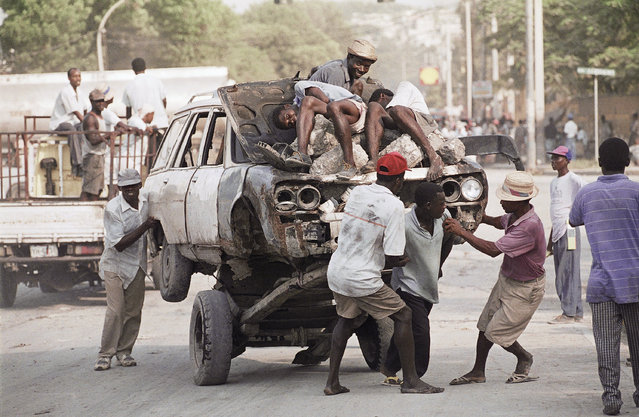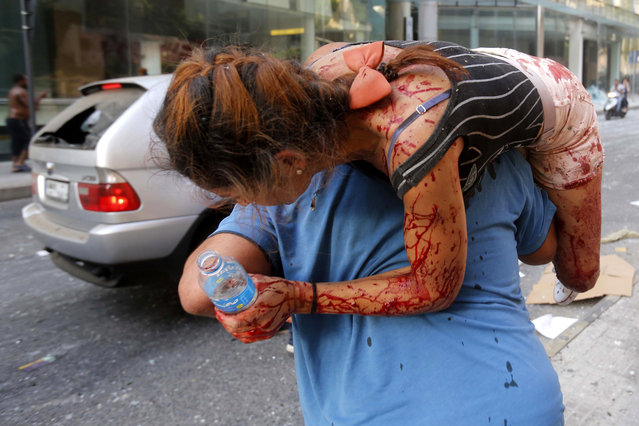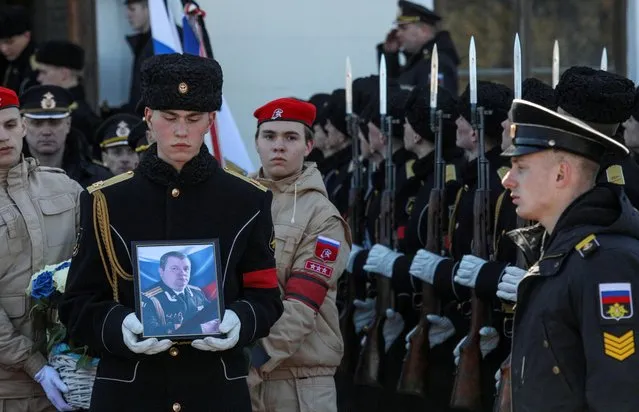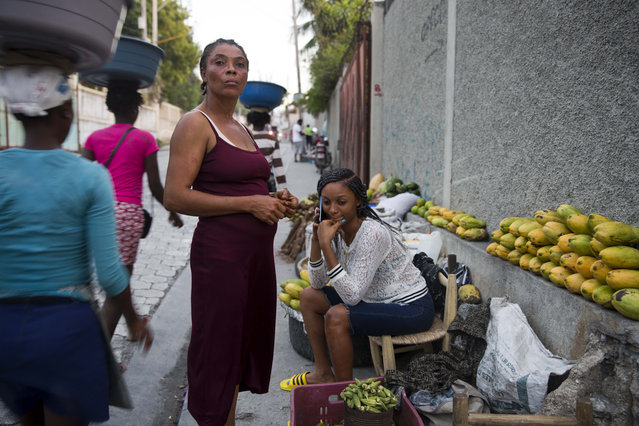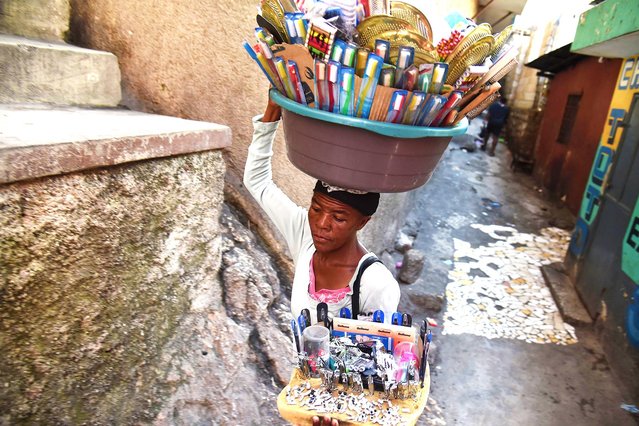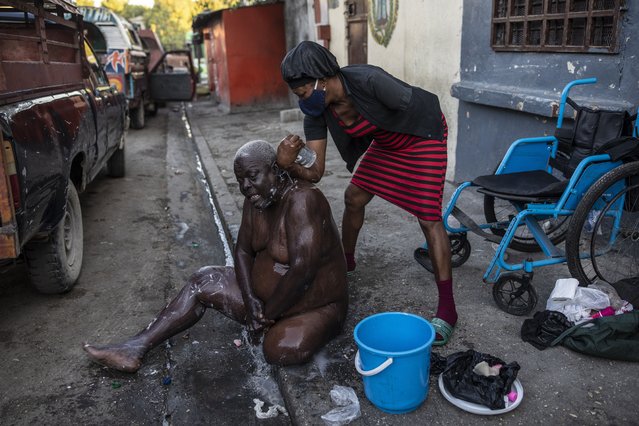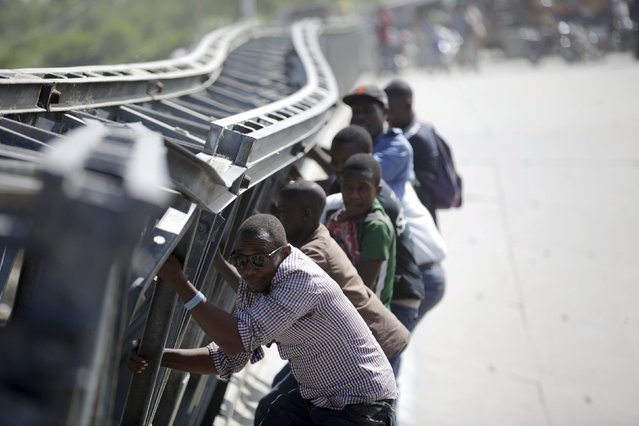
A policewoman uses her mobile phone as navy honor guards stand near of a World War Two memorial during celebrations to mark Victory Day in the Black Sea port of Odessa May 9, 2014. Ukraine celebrates the 1945 victory over Nazi Germany during World War Two on May 9. (Photo by Gleb Garanich/Reuters)
11 May 2014 12:00:00,post received
0 comments

